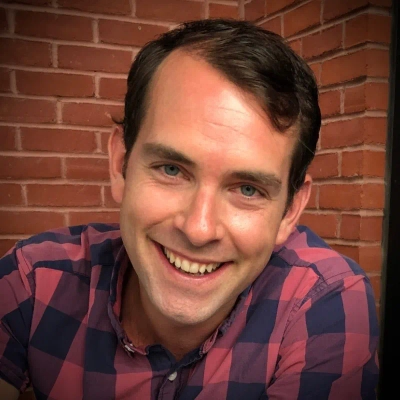22 Ways to Adjust Your Debt Strategy in Response to Interest Rate Trends
Interest rate trends can significantly impact debt strategies in various sectors. This article presents expert-backed approaches to adjust your debt management in response to these fluctuations. Discover practical tips and insights to navigate the complex landscape of interest rates and optimize your financial decisions.
- Lock in Stability for Smoother Business Operations
- Plan Ahead to Mitigate Rate Change Impact
- Accelerate Projects to Avoid High-Interest Loans
- Strengthen Existing Assets with Fixed-Rate Financing
- Review Debt Structure Regularly for Proactive Management
- Pivot to Cash Purchases for Competitive Edge
- Adapt Acquisition Strategy to Market Conditions
- Explore Creative Financing to Bypass Traditional Banks
- Seek Assumable Mortgages for Lower Carrying Costs
- Prioritize Long-Term Financial Health in Property Decisions
- Build Flexibility into Debt Strategy for Resilience
- Scrutinize Deals as if Your Own Money
- Reduce Exposure by Partnering on Projects
- Focus on Quick Turnarounds to Minimize Borrowing
- Maintain Clear Financials for Confident Decision-Making
- Trim Budget Fat to Boost Financial Resilience
- Restructure Debt Creatively for Mutual Benefit
- Lead with Empathy in Real Estate Transactions
- Clear Small Debts to Increase Deal Flexibility
- Explore Debt Relief Programs for Permanent Solutions
- Manage Debt Wisely to Maintain Quality Care
- Focus on Controllable Factors in Home Buying
Lock in Stability for Smoother Business Operations
When interest rates started climbing, I had to take a hard look at how I was handling debt for GreenAce Lawncare. Landscaping runs on a seasonal cycle, and in the past, I relied on short-term credit lines to get us through the slower months. When rates went up, those same loans started feeling more like a burden than a safety net. I decided to roll what I could into a fixed-rate loan, which gave me predictable payments and let me keep investing in fertilizer, mowing equipment, and staff without the stress of rates changing on me mid-season.
I also saw homeowners tightening their own budgets when borrowing costs rose. Lawns can sometimes feel like a luxury, so to keep folks engaged, I set up more flexible payment plans. That way, they could still enjoy a healthy, green yard without worrying about a big upfront bill, and we kept steady work flowing through the shop. If I had to boil it down to one piece of advice, it's this: don't chase short-term fixes when interest rates are unpredictable. Lock in stability where you can. Just like grass responds best to steady care, your business runs smoother when you know what's coming every month. It keeps your team confident and your customers happy.
Plan Ahead to Mitigate Rate Change Impact
How did you adjust your personal or business debt strategy in response to interest rate trends?
When interest rates started climbing, I took a hard look at my debt strategy. For personal debt, that meant paying down variable-rate balances faster, since those costs can balloon quickly as rates rise. On the business side, I focused on locking in fixed-rate financing wherever possible, even if the initial rate wasn't the absolute lowest — stability mattered more than chasing short-term savings.
A real example: I had a small line of credit tied to a variable rate. When rates began moving up, I decided to pay it down aggressively instead of carrying a balance. At the same time, I refinanced a longer-term loan into a fixed rate. The fixed option gave me predictability, which made budgeting and cash flow planning much less stressful.
In hindsight, those choices gave me peace of mind. I wasn't scrambling every time the Fed announced a hike, and I knew exactly what my payments would look like each month.
What single piece of advice would you offer others facing similar decisions?
My biggest advice is this: don't ignore the impact of rate changes — plan ahead. Too many people assume a small hike won't affect them, but variable debt compounds quickly, and businesses relying on credit can see costs rise overnight. If you can, shift variable-rate debt into fixed, even if the fixed rate feels a little higher today. The certainty is worth it.
And for personal finances, treat high-interest debt like an emergency. Paying it down faster isn't just about saving money — it's about reducing vulnerability. Having predictable payments gives you room to breathe and lets you focus on long-term goals instead of constantly reacting to the next headline.

Accelerate Projects to Avoid High-Interest Loans
When rates started climbing, I actually accelerated my timeline on several Hudson Valley renovations, using cash reserves to complete projects faster and avoid carrying high-interest construction loans longer than necessary. My advice: speed becomes your friend in a high-rate environment--I'd rather hustle to finish a flip in three months with my own money than stretch it to six months with expensive borrowed capital, even if it means working nights and weekends alongside my construction crew.
Strengthen Existing Assets with Fixed-Rate Financing
How did you adjust your personal or business debt strategy in response to interest rate trends?
In the past few years, when rates started going up very quickly, I switched from buying to stabilizing my debt. I focused on refinancing existing assets with fixed debt and quickly paying down variable debt instead of looking for new properties at rates that were too good to be true. In one case, I owned a residential property in Des Moines that had a flexible rate note that wasn't working out when the Fed raised rates. Instead of selling quickly, I restructured by moving into a long-term fixed loan. I then used the money to make improvements inside, like adding new floors, energy-efficient appliances, and updated kitchens. This caused rents to go up, which made the property stable in terms of cash flow. The project went from being about progress to making what I already had stronger.
What single piece of advice would you offer others facing similar decisions?
The main thing to remember is to leave room for error before you need it. Too many investors base their deals on the best-case scenario, which is that rates of interest and safe finance will always be available. In Des Moines, I learned that interest rates will always change, and you can't time them just right. I realized, "It's not a strong deal if your project can only work at the lowest cost possible." Take a look at how much your loan would cost if the rate was two or three points higher than the one you were given. You should work on a project if the numbers still make sense. Being disciplined has helped me stay out of bad debt and act quickly when chances come up.

Review Debt Structure Regularly for Proactive Management
For me, the biggest adjustment came down to timing and being proactive. When interest rates started to climb, I took a hard look at both my personal and business debt. On the personal side, I focused on locking in favorable terms on my mortgages before lenders fully priced in the higher rate environment. For the business, I tightened up cash flow management, ensuring we weren't carrying unnecessary short-term debt and using surplus cash to pay down higher-interest obligations first.
One thing I've learned is that debt isn't necessarily a bad thing; it's a tool. However, in a rising rate environment, the cost of that tool changes quickly. My single piece of advice? Don't wait until you feel the pinch. Review your debt structure regularly, and stress-test it against different rate scenarios. That way, you're making decisions from a position of strength rather than reacting under pressure.
When you approach debt strategy like that, you're not just protecting yourself; you're giving yourself room to grow even in tougher markets.

Pivot to Cash Purchases for Competitive Edge
When interest rates began climbing, I pivoted our strategy at Hapa Homebuyers to focus exclusively on properties we could purchase with our own cash reserves. This allowed us to present more attractive offers to distressed sellers without financing contingencies.
My single best piece of advice is to maintain operational flexibility. In our business, we've built a cash cushion during lower-rate environments specifically so we can capitalize on opportunities when others are retreating from the market due to financing challenges. This approach allows us to help homeowners who need quick, certain closings regardless of what the Fed is doing.

Adapt Acquisition Strategy to Market Conditions
When interest rates climbed, I shifted our real estate investment strategy to target lower-priced properties that we could purchase with minimal financing, focusing on velocity rather than size. My advice is to maintain flexibility in your business model--don't get locked into a single acquisition strategy. We've found success by adapting our approach to market conditions rather than fighting against them, which sometimes means passing on deals that would have been no-brainers a year earlier but no longer make financial sense with today's cost of capital.

Explore Creative Financing to Bypass Traditional Banks
When interest rates began their ascent, I proactively explored creative financing options for our real estate deals, like structuring seller-financed agreements that bypassed traditional banks entirely. This strategy allowed us to keep closing deals even when rates made conventional loans less attractive. My best advice for others is to focus on truly understanding and meeting a seller's unique needs, because often, their motivation to sell quickly or without hassle can open doors to win-win financing solutions that don't depend on volatile interest rates.
Seek Assumable Mortgages for Lower Carrying Costs
When interest rates climbed, I focused on identifying properties with existing assumable mortgages, which allowed me to avoid the high-interest market on the new loan portion and secure properties with much lower overall carrying costs. My advice is to dig deeper than just asking about price; specifically, ask sellers about their existing loan terms. You might uncover a golden opportunity to assume their favorable rate, especially if they're motivated to sell quickly.

Prioritize Long-Term Financial Health in Property Decisions
In the current high-interest environment, I've been advising clients to consider property alternatives that align with their financial capacity rather than overextending themselves. Recently, I helped a client save $50,000 by recommending a townhouse instead of a single-family home, allowing them to maintain financial stability despite rising mortgage rates. When facing important debt decisions in fluctuating interest rate markets, I encourage people to prioritize their long-term financial health over short-term aspirations. The right property at the right price point often provides better investment returns than stretching your budget for a dream home that creates financial stress.

Build Flexibility into Debt Strategy for Resilience
"The key to navigating interest rate shifts is not reacting out of fear, but making decisions anchored in long-term resilience."
When interest rates began to rise, we revisited our debt strategy with a simple principle: flexibility first. We restructured certain short-term obligations into longer-term fixed-rate instruments to shield ourselves from volatility, while also accelerating repayments on higher-interest lines. The unexpected upside was how this disciplined approach forced us to sharpen our capital allocation decisions, ensuring every dollar was working harder. My advice to others would be to treat debt strategy like risk management: build in buffers, diversify financing sources, and always maintain the agility to adjust when the market changes.
Scrutinize Deals as if Your Own Money
When interest rates began rising, I took a hard look at my portfolio and made sure to accelerate paying down high-rate debt while being much more selective about taking on new leverage. My top advice: run the numbers for every deal as if your own money is on the line. Sometimes that means waiting on a project or finding a creative, lower-cost way to finance rather than jumping in just because that's what you did last year.

Reduce Exposure by Partnering on Projects
When interest rates started climbing, I doubled down on building more equity into each deal so I could rely less on outside financing. Sometimes that meant bringing in cash partners on a flip instead of maxing out a loan. My advice: don't just think about the cost of debt; think about who you can bring to the table that reduces your exposure and still gets the project across the finish line.

Focus on Quick Turnarounds to Minimize Borrowing
When interest rates started climbing, I shifted my approach by focusing on shorter-term projects that required less borrowing and quicker turnarounds. This way, I wasn't stuck holding expensive debt for long periods. My biggest piece of advice is don't ignore the cost of money--sometimes the smartest move is to stay lean, double down on cash flow, and only take on debt that you're certain will pay for itself quickly.

Maintain Clear Financials for Confident Decision-Making
I had to take a hard look at both my personal and business debt. For my bookkeeping business, that meant prioritizing paying off high-interest balances faster, even if it meant holding back on some investments I had planned. On the personal side, I refinanced one loan while rates were still reasonable, which gave me a little more breathing room each month. None of it was easy, but those changes gave me stability when costs were rising everywhere.
If I could give one piece of advice, it would be this: don't avoid your financials. Higher interest rates have a way of exposing cash flow issues, but they can also point you toward solutions. When your bookkeeping is consistent—monthly reports, expense tracking, tax planning—you can make decisions based on facts instead of fear. For me and for my clients, clarity really is the difference-maker. Whether it's figuring out repayment schedules, preparing for tax season, or deciding when to hold back on borrowing, having a clear picture of the numbers gives you confidence. That's what turns rising rates from something overwhelming into something you can actually manage.

Trim Budget Fat to Boost Financial Resilience
When interest rates went up, I focused on reducing unnecessary operational expenses within my business so I could allocate more capital towards debt reduction, which helped me avoid taking on new, higher-interest loans. My advice to others is to scrutinize every line item in your budget; you'd be surprised how much fat you can trim when every dollar truly counts toward your financial resilience.

Restructure Debt Creatively for Mutual Benefit
When interest rates started rising, I restructured some older notes by offering sellers a lump-sum buyout rather than sitting on long-term higher-interest obligations. This approach gave them immediate cash and protected me from carrying expensive debt. My advice: don't just think like a borrower, think like a dealmaker. Sometimes the smartest way to handle debt is to change its structure entirely, not just the size of the payment.

Lead with Empathy in Real Estate Transactions
My strategy has always started with listening, not with spreadsheets, especially when rising rates cause stress for homeowners. As rates climbed, I focused on crafting options that eliminated financial uncertainty for the seller, which often meant a simple, all-cash offer that closed on their timeline. My advice is to remember you're solving a person's problem, not just a property's -- lead with empathy, and a clear, fair path forward will present itself.

Clear Small Debts to Increase Deal Flexibility
When interest rates started rising, I made it a point to clear out smaller loans first to free up cash flow. This strategy allowed me to move faster on opportunities without depending on expensive financing. My best advice is to stay disciplined with your debt game plan: knock out the little fires quickly so you're not weighed down when a great deal shows up and speed matters more than leverage.
Explore Debt Relief Programs for Permanent Solutions
Instead of focusing on timing, I emphasized restructuring. For example, a client burdened with over $80,000 in tax debt considered a payment plan that looked manageable at today's rates but would have locked them into years of compounded interest. We helped them qualify for the IRS Offer in Compromise program, which ultimately cut their debt to less than $10,000 - a permanent solution that wasn't tied to market swings.
My advice: don't let interest rate trends dictate your entire debt strategy. Rates rise and fall, but IRS penalties and compounding interest accumulate regardless. The key is exploring relief programs like the IRS Fresh Start, where the savings often dwarf any advantage gained by waiting for lower rates. Chasing the Fed's moves is speculation. Structuring your debt with programs designed for relief is strategy.

Manage Debt Wisely to Maintain Quality Care
I've learned that financial decisions can be a lot like dental health; they both work best when you're proactive. When interest rates started climbing, I made it a priority to pay down higher interest debts faster. That shift helped me keep the practice stable, which means I can continue investing in the technology and comforts that make a dental visit here feel more like a spa experience than a chore.
For me, it wasn't just about the numbers; it was about protecting the level of care my patients expect. Many of the people who walk through our doors come with years of dental anxiety or a deep desire to feel good about their smile again. By managing debt wisely, I can keep our environment calm, modern, and welcoming while offering transformative treatments like veneers, implants, or full smile makeovers. My goal is always the same: to give patients the confidence to smile without hesitation. Whether it's a routine cleaning or a full smile transformation, every decision I make, financial or otherwise, is about ensuring our patients leave feeling cared for, relaxed, and proud of their smiles.

Focus on Controllable Factors in Home Buying
As an agent, my strategy has been to guide my clients away from trying to time the interest rate market, which is a recipe for disaster. My single piece of advice, born from seeing too many buyer horror stories, is to focus on what you can actually control: find a home with a monthly payment you're comfortable with and negotiate the sale price hard. You can always refinance a high interest rate down the road, but you're stuck with the price you paid forever.







